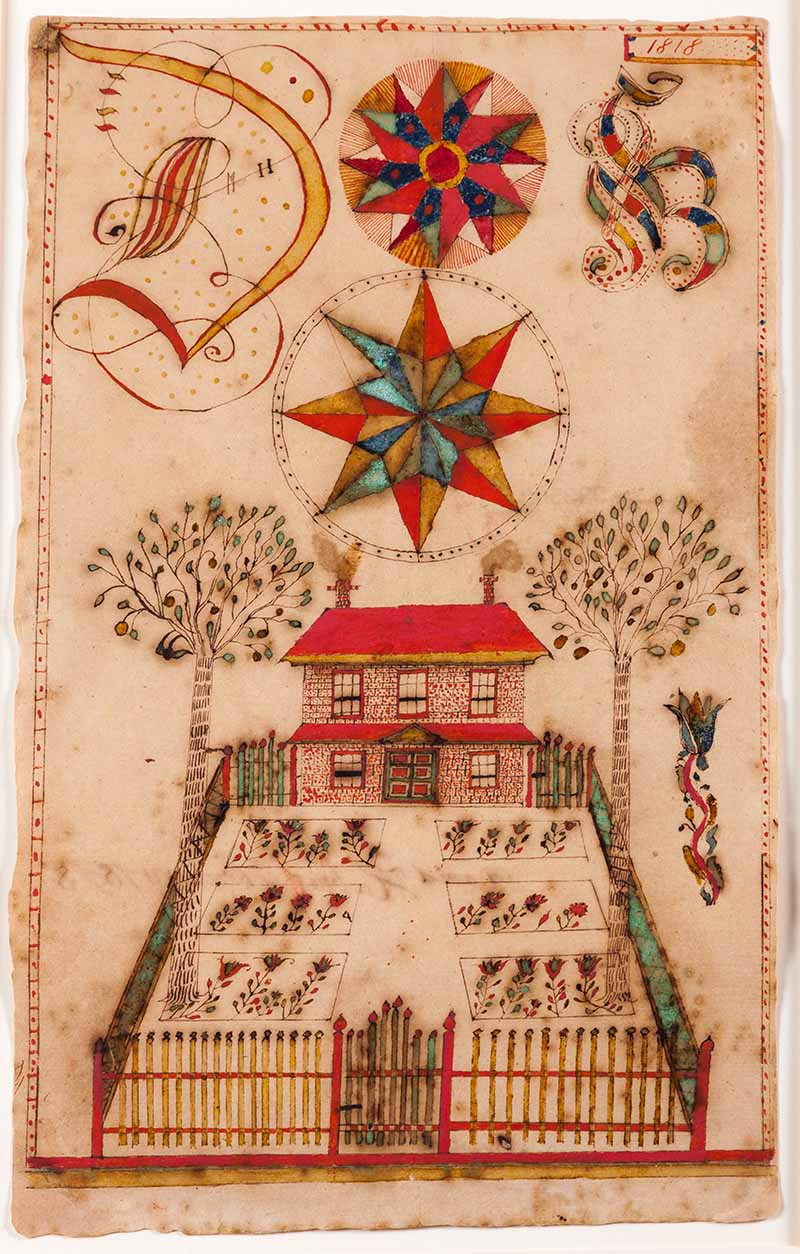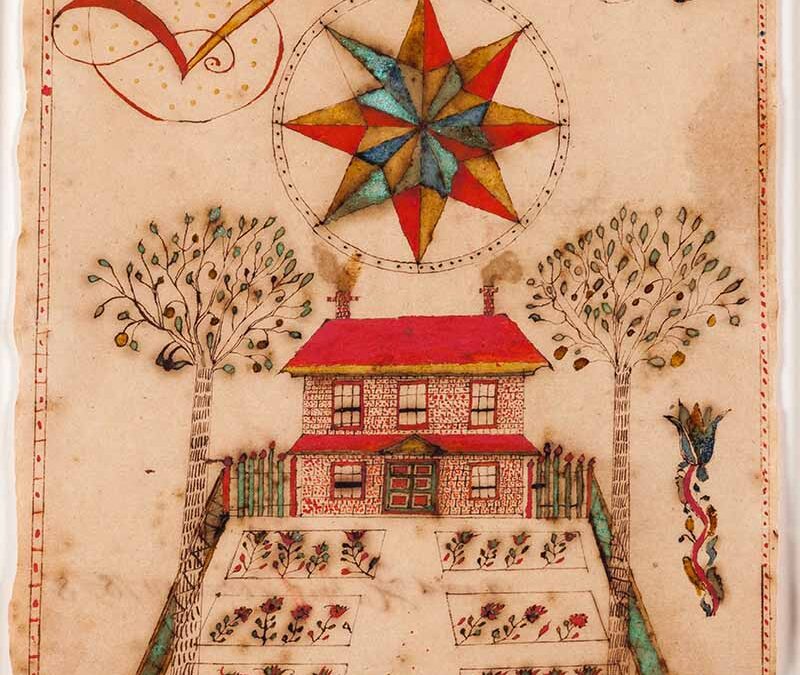House with Six-Bed Garden

| Maker | Susanna Heebner |
| Date of Creation | 1818 |
| Location | Worcester Township, Montgomery County, Pennsylvania |
| Materials | Watercolor and ink on laid paper |
| Institution | Schwenkfelder Library & Heritage Center |
| Credit Line | Gift of the Estate of Henry H. Heebner |
| Accession Number | 1920.25.158 |
| Photo Credit | Steve Pestrock |
Pennsylvania Germans made Fraktur, or German-language decorated manuscripts, in the 18th and 19th centuries. These manuscripts and drawings served as teaching tools, as documentation for life events such as birth and baptism, and as a form of creative expression. Fraktur is the essential visual culture for Pennsylvania Germans during this period, conveying moral and religious ideas and decorative elements that have become closely identified with the culture. The Schwenkfelder Library & Heritage Center is home to a large collection of fraktur, dating from the mid-18th century through the late 19th. The term “Schwenkfelder” has been used since the early 1700s to identify people who study and follow the ideas and teachings of spiritual reformer Caspar Schwenckfeld von Ossig (1489/90–1561). One of the Schwenkfelder Library & Heritage Center’s most significant collections of fraktur was donated by the estate of Henry H. Heebner in 1920. It includes fraktur made by two generations of the Schwenkfelder Heebner family and the work of schoolmasters who taught the family’s children. Susanna Heebner (1750–1818) was a rare female maker of fraktur. She was the only woman working on the same level as her male counterparts. Schoolmasters and some pastors made fraktur in its “golden age” (approximately 1780 to 1830), and women were not part of that tradition. Susanna Heebner came from a highly educated family where reading, writing, and thinking about their Schwenkfelder faith was a priority. Susanna made fraktur for her nieces and nephews and as expressions of her faith and creativity. This drawing is one of her best-known works. Susanna depicts a house in a typical style favored by 18th-century Germans in southeastern Pennsylvania. It resembles the Peter Wentz house in Worcester, Montgomery County, where General George Washington was headquartered following the Battle of Germantown. The six-bed garden is a common plan for Pennsylvania German gardens. Susanna added some stars above the house, demonstrating her skill with a compass, and her nephew’s initials, D H, for David Heebner.

